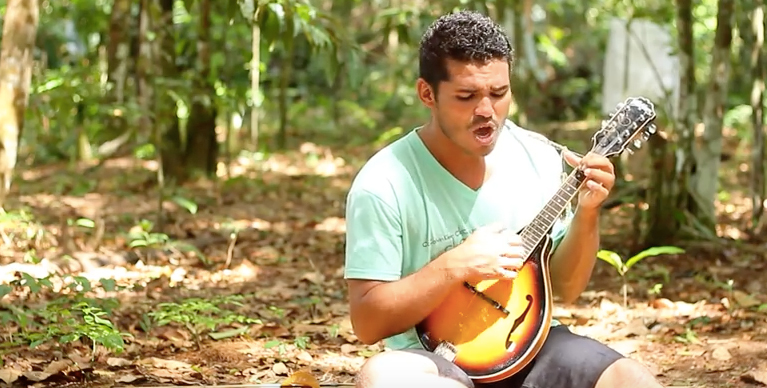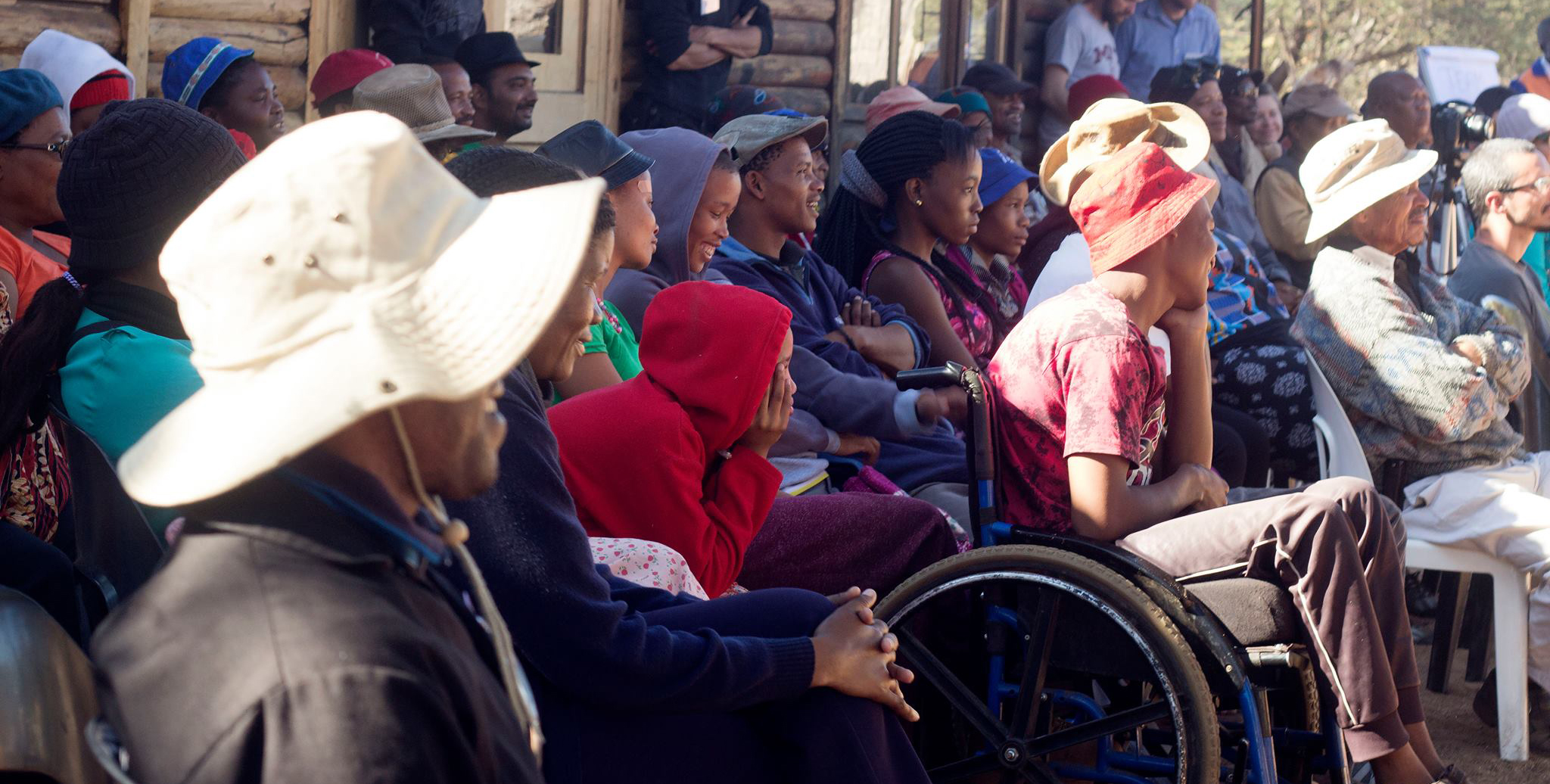From Tanzania to India, Chris Mushi's Journey as a Maker
“Imagine that to prevent pests from eating your corn, you must store your corn at least 15 cm off the ground. But you don’t have money to buy materials, so you must only use two pieces of paper. You can do anything to the paper—fold it, tear it, cut it, bend it, but you may not add anything to the paper to hold it together—no tape, no staples, no glue.”
When Chris Mushi and other instructors at IDIN-supported Twende Innovation Center share this design challenge with young people in Arusha, Tanzania during Creative Capacity Building trainings, they often hear protests.
“That’s impossible!”
But Chris knows better. “They start working along eventually, and realize that all of them can do it,” he nods.
Chris reflects on Twende’s trainings for a moment: “If had those opportunities when I was young, I don’t think I would be like what I am now.”
And while it’s difficult to imagine Chris as a more incredible maker than he is today, one can understand what he means.
“In our country, people don’t build things. We only expect to buy things from China and India and such. When you run Creative Capacity Building trainings with young people, you are creating a generation of creators. So people will grow up, and say, why would I buy this? I could make it, or make it better,” Chris explains.
Chris grew up in Moshi at the foot of Mt. Kilimanjaro, where he and his six siblings attended a small public school and helped his parents farm the land around them. Like many young Tanzanians, Chris left for the city—Arusha, in his case—to find work after school. Chris pursued vocational training as a draftsman, and started working jobs here and there.
It wasn’t long after Chris moved to Arusha that he met Jim Elsworth, a mechanical engineer from the United Kingdom who had been living in Tanzania for several years. Jim had attended an International Development Design Summit (IDDS) in Ghana, and had a passion for appropriate technologies, especially those that could help small-scale farmers improve their yields.
Throughout the next few years, Chris and Jim were almost always working on a new prototype together—from a pedal-powered seed treater to a tricycle for transporting crops more efficiently. Chris also spent some time as an entrepreneur, running his own small shop in Arusha.
When Jim created Twende in 2006, Chris was the innovation center’s first and only employee. Twende was, from the beginning, designed to be a space for people who have ideas to “come and explore those ideas,” Jim explains.
Chris is one of the workshop’s main supervisors, encouraging people to use the tools and the space, and helping them to feel more comfortable using the tools to structure a prototype from their initial idea.
Marko Lepakit, who works closely with Chris at Twende describes Chris as hardworking and cheerful. Other Twende counterparts fondly talk of Chris and his willingness to give anything a try regardless of whether he has training in that area or not.
“He’s always ready to help and gives positive suggestions on other’s projects and technologies. Chris is keen to learn new things,” Marko shared.
It’s been almost a decade since Twende was first founded, and the team has seen tremendous growth in recent years through expanded trainings, events, and activities as well as ongoing prototyping and development of locally appropriate technologies. More and more, Twende is the home to local innovation and innovators in Arusha.
In 2014, Twende was one of many organizing partners that made the International Development Design Summit in Arusha a success. They coordinated countless planning meetings in junction with CAMARTEC and Global Cycle Solutions and provided ample workshop space and tools for summit teams to prototype new technologies to address local needs. Chris remembers hearing about IDDS Ghana from Jim a few years back, but says that this particular summit in Tanzania is the one that really stuck with him.
“Participants filled our workshop. I was interested in how they were learning new things. I was learning from them and they were learning from me,” Chris explains. “I made some new friends there. (IDIN Network member) Bhushan Reddy asked me to come visit him in India.”
Later on, Chris recalls reading about another IDIN Network member, Mensah Solomon, who attended IDDS in Ghana and went on to visit IDIN Network members who worked at Avani in India to learn how about their approach to solar energy in rural communities. Chris had his own interest in solar energy, and wondered how what was being worked on in India might apply back home in Arusha.
So when applications opened for IDDS Aarogyam, a health-themed design summit in Chennai, India, Chris—a lifelong learner and maker—was more than ready.
Chris came to Chennai in July, and became part of a team tasked with no easy feat—find a way to help babies breathe in the first few hours of life.
Out of all the neonatal deaths in India, 230,000 each year are attributed to asphyxia, and hundreds of thousands of other babies suffer from lifelong brain damage caused by asphyxia. But in understaffed and busy health centers, nurses and midwives often spend their time running back and forth between a mom and her baby to ensure the health of both. This can make it incredibly difficult to provide the consistent care needed to prevent asphyxia.
Chris and his team decided to create an easy-to-use, low-cost, solar battery-powered T-piece resuscitator with a mask, heart rate monitor, and ambient air source.
Developing a medical device is no small feat, and getting a device to market can take years of research, concept validation, and testing. During the summit, Chris and other participants heard from IDIN Network members Aspen Flynn and Rebekah Scheuerle, part of the JustMilk team, who know these challenges all too well. But JustMilk, which also started at an IDDS and has made tremendous progress since, is testament to the fact that every team starts somewhere.
For Chris and his team, balloons and plastic tubes help mimic the flow of air through an infant’s lungs. A small support pillow helps air move appropriately through the baby’s lungs. The team also thinks an audible heart rate monitor is a crucial component to the overall device and its usefulness to health care providers.
IDDS Aarogyam participant Chris Mushi demonstrates his team's operating sketch model. Chris and his team are developing a prototype for a new kind of low-cost resuscitator.
Posted by IDIN - The International Development Innovation Network on Sunday, July 26, 2015
Chris came to Chennai knowing that a design summit with a health theme would make it more difficult to make rapid progress on a prototype, but excited to take ideas and new projects back to his own community.
Hundreds of students, academics, and community members attended the design summit’s final presentations to learn more about the technologies that Chris and the other participants had poured four weeks of their lives into ideating and creating. As the summit came to a close, Chris said he was eager to see where his team’s project would go next, and hoped to support its further development whether it took off in India, Tanzania, or somewhere else entirely.
After the summit, Chris got a chance to live the experience that had first sparked his interest in visiting India—he traveled to Bangalore with his friend and fellow Network member Bhushan Reddy, who works at Selco Incubation Centre, a social enterprise that provides sustainable energy solutions to low-income households throughout southern India.






